Affiliate disclosure: This post may contain affiliate links. Please see our Privacy Policy.
Chokecherries (Prunus virginiana) are an edible wild fruit that has been harvested for millennia, and they were once an important food source for Indigenous people in the Americas. They’re still abundant and incredibly popular with foragers across their range.
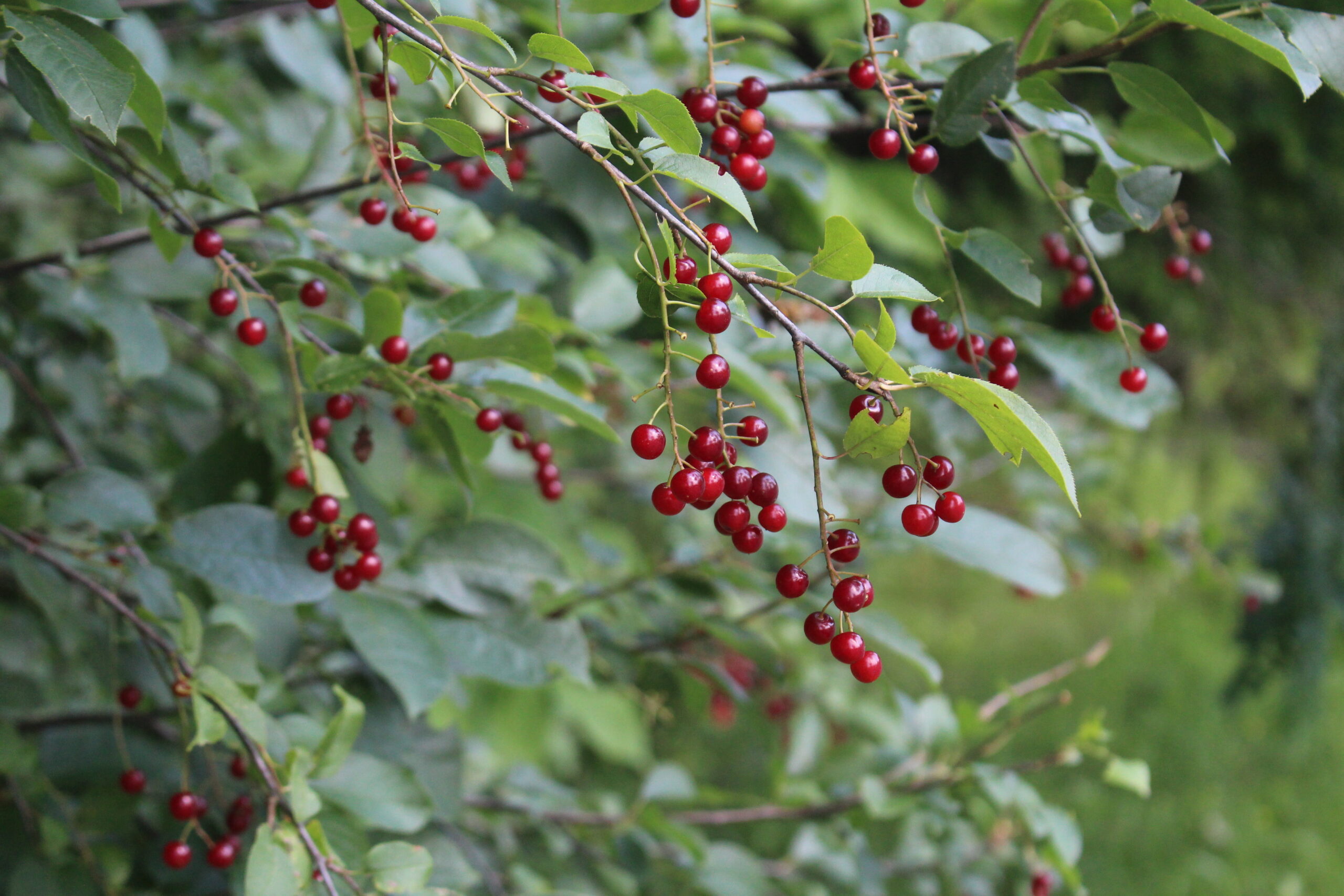
I’ll admit the name “chokecherry” doesn’t exactly get your mouth watering. Anything with “choke” in the name sounds like trouble. The other common names bitter berry and bird cherry aren’t any more appetizing, but chokecherries are not only edible, they’re delicious. The berries can be a bit astringent right off the bush, but that astringency fades away with the proper preparation. (And, as with any wild fruit, some bushes are much sweeter than others.)
Anyone who up in the Northeast or Midwest probably tasted somebody’s grandma’s chokecherry jelly, and ambitious grandpa’s had a jug of chokecherry wine squirreled away each year, too.
Chokecherries are in the stone fruit family, along with cherries and plums. Unlike wild pin cherries, which produce individual fruits to be spread by birds, chokecherries produce large fruit clusters for mammalian hands to pick easily.
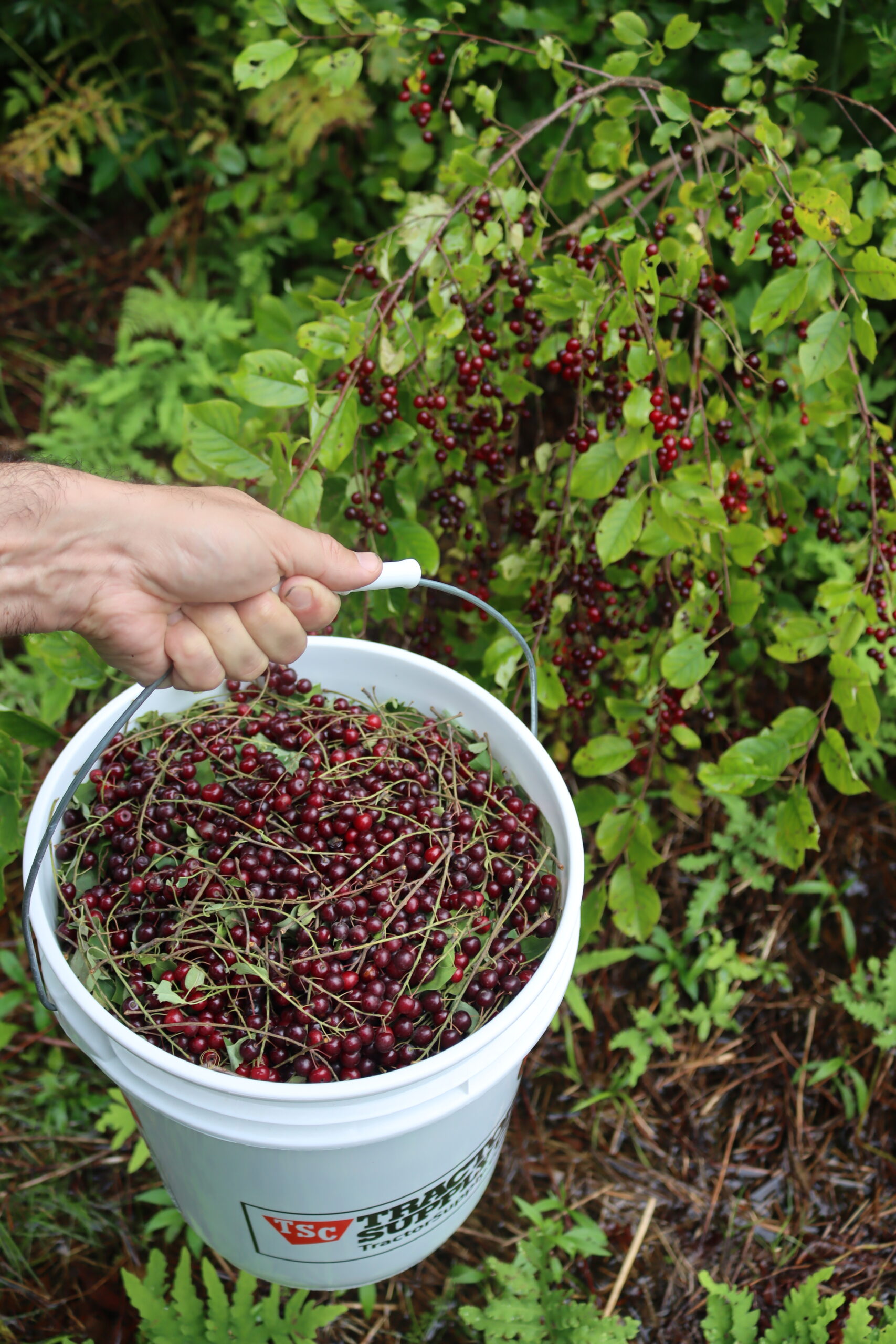
Chokecherries have evolved alongside small mammals, and they’re hoping to be picked by the handful. Dexterous mammals like raccoons then carefully strip the flavorful fruit away and deposit their seeds along woodland paths.
In times past, chokecherries were an important food source for Indigenous Americans, and pounded chokecherries were one of the three ingredients in Pemmican (along with dried buffalo meat and fat), the long-lasting food that sustained the plains Indians.
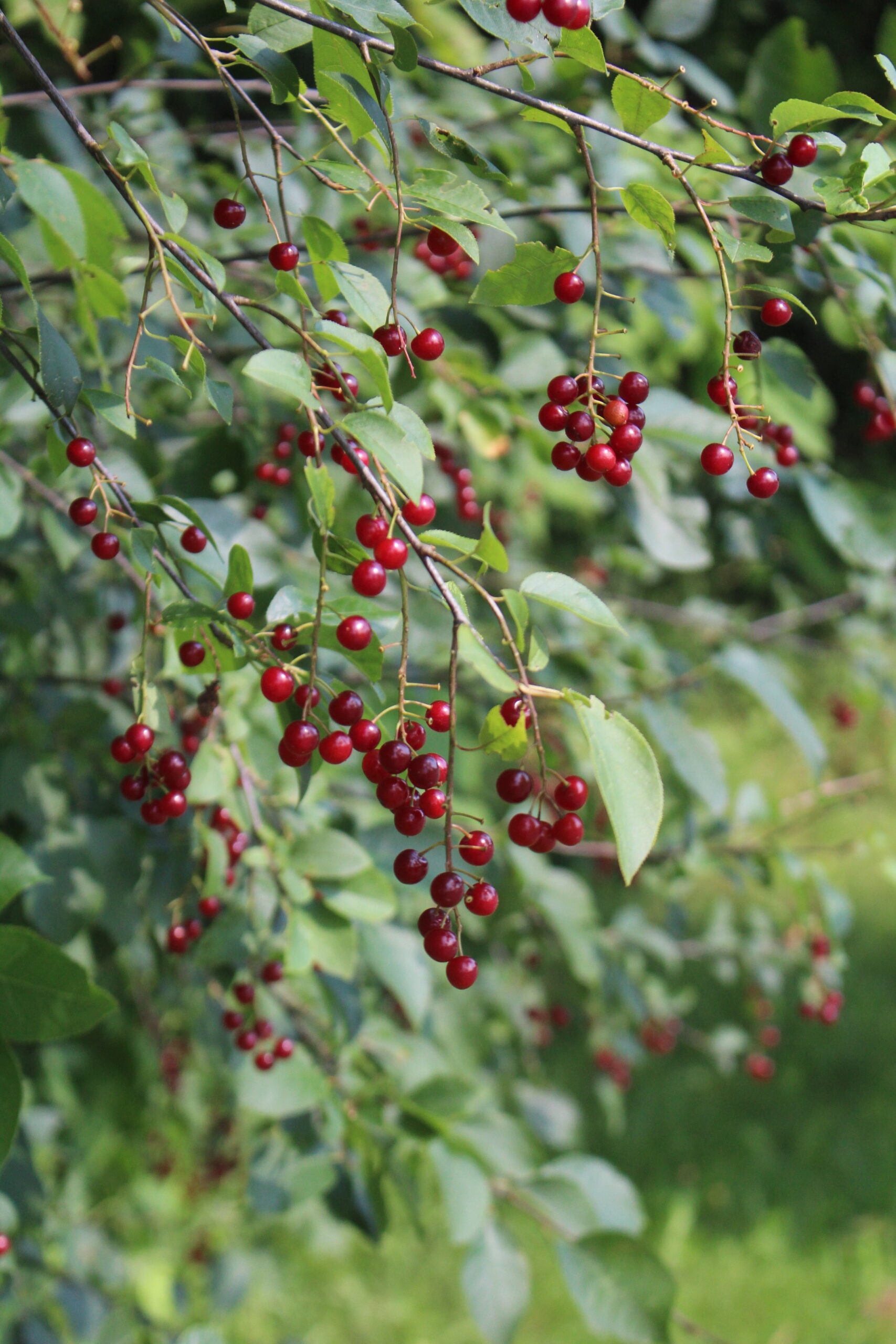
They say a loved child has many names, and chokecherry goes by quite a few common names. It’s also called Choke Cherry, Bitter Berry, Bird Cherry, Red Chokecherry, Sloe Tree, Chuckleyplum, Western Chokecherry, California Chokecherry, Whiskey Chokecherry, Rum Chokecherry, or Virginia Chokecherry.
One subspecies of Chokecherry, P. virginiana var. demissa, is usually called Black Chokecherry. This species is native to most of Canada and much of the United States.
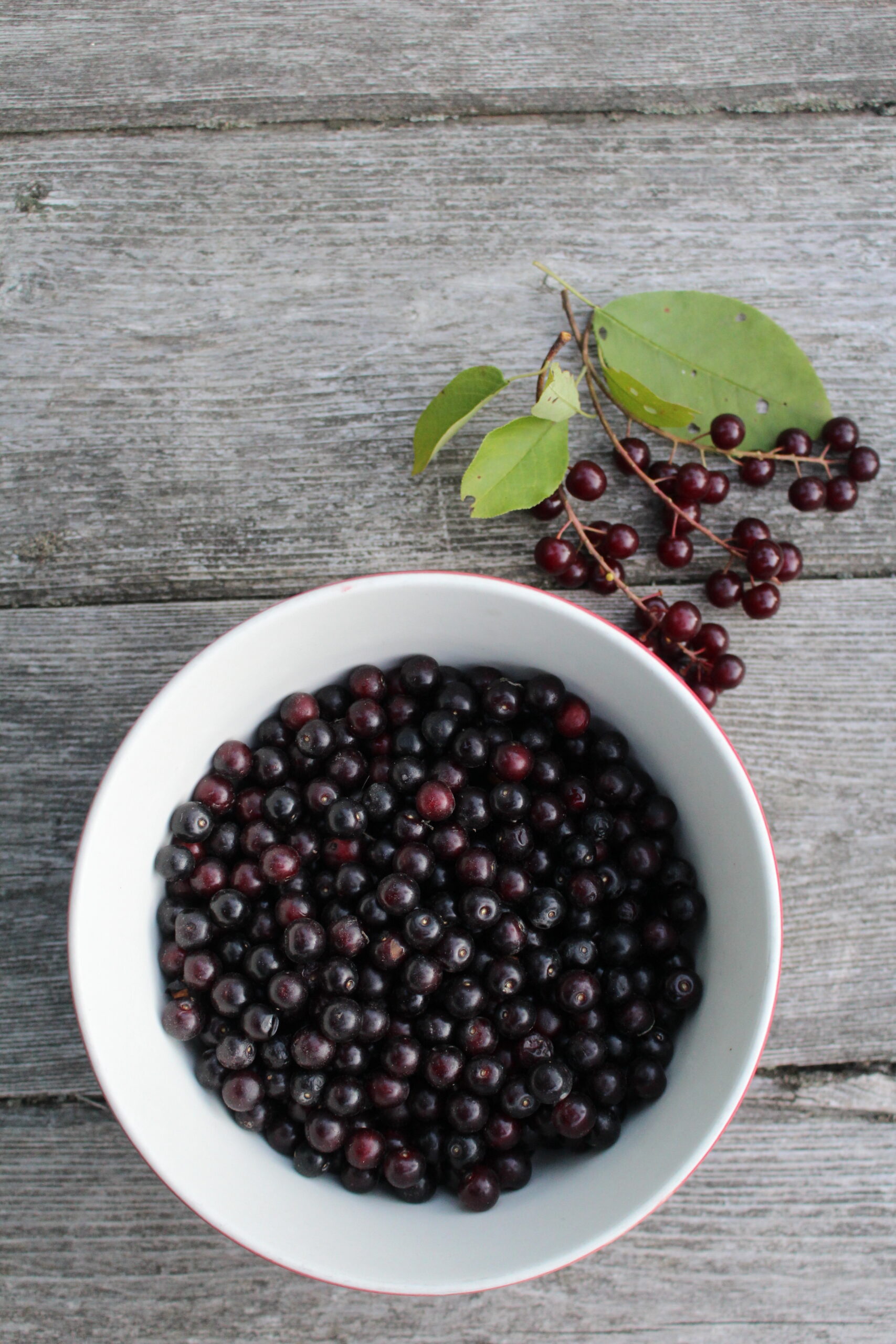
Is Chokecherry Edible?
Despite its ominous name, Chokecherry is edible. It earned its name because it is highly astringent and difficult to consume raw. That said, with a little processing, it makes tasty jams, jellies, and wines.
Raw Chokecherry seeds also contain cyanide, which can be toxic if consumed in large quantities. It sounds scary, but this is the same chemical found in apple seeds. Cooking the seeds renders them safe.
Some folks believe that drying the berries has a similar effect. Native Americans once relied on Chokecherries for significant nutrition and would simply pound and dry the berries before consumption.
Use your best judgment and caution when processing Chokecherries. Small children may be especially susceptible to the cyanide contained in the raw seed.
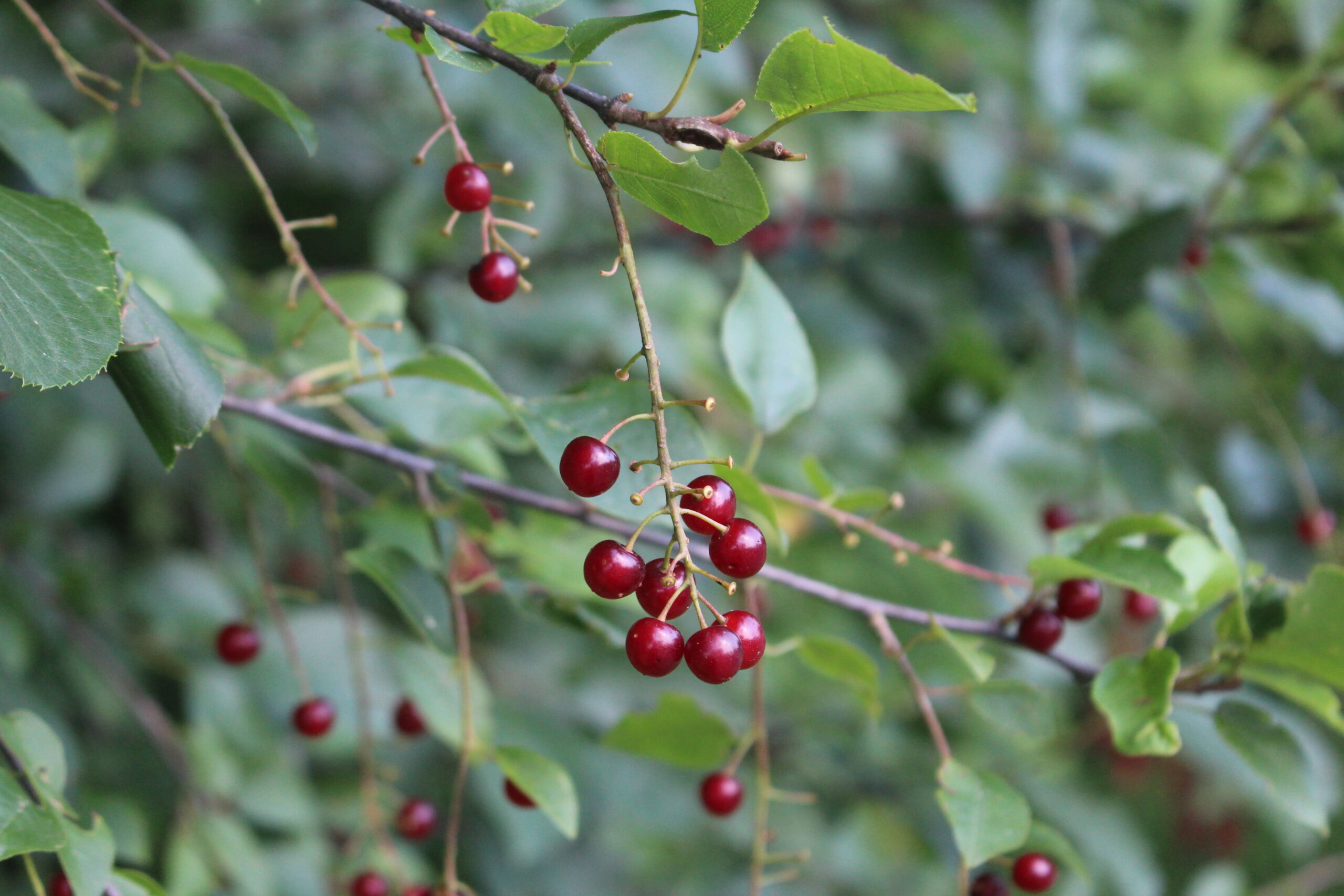
While they were historically employed in traditional remedies, Chokecherry’s leaves and bark are also toxic. They contain hydrocyanic acid, also known as prussic acid. Again, there is some debate about whether cooking would render them safe, but the science is still out, and it’s best to err on the side of caution.
While it may be an enjoyable plant for human foragers, Chokecherry isn’t safe for browsing horses, cows, sheep, and other livestock. You should remove it from their pastures.
It’s an important spring food source for pollinators, and the bushes are absolutely covered with nectar-rich sprays of blossoms in season.
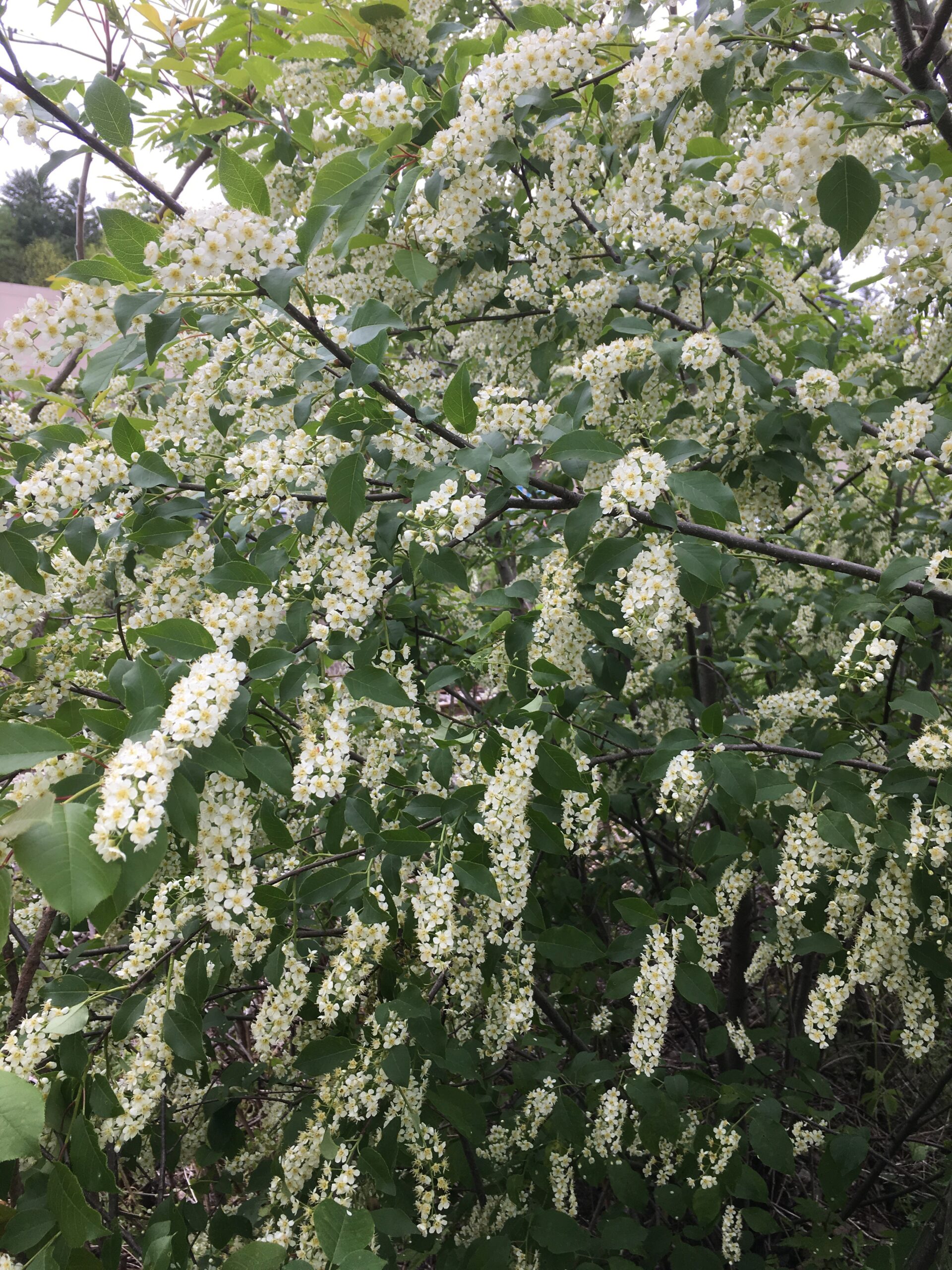
Chokecherry Medicinal Benefits
Many indigenous people used Chokecherries in their medicinal practices. Some groups would boil the inner bark into a tea to use as a sedative, appetite stimulant, or to treat sore throats, respiratory ailments, fevers, and diarrhea. They may also have used the bark externally for treating wounds and made cough syrups from the berries.
Colonists quickly adopted Chokecherry for treating malaria, colds, consumption, coughs, burns, and wounds. It was considered one of the most important drugs native to North America and was listed in the 1820 US Pharmacopeia.
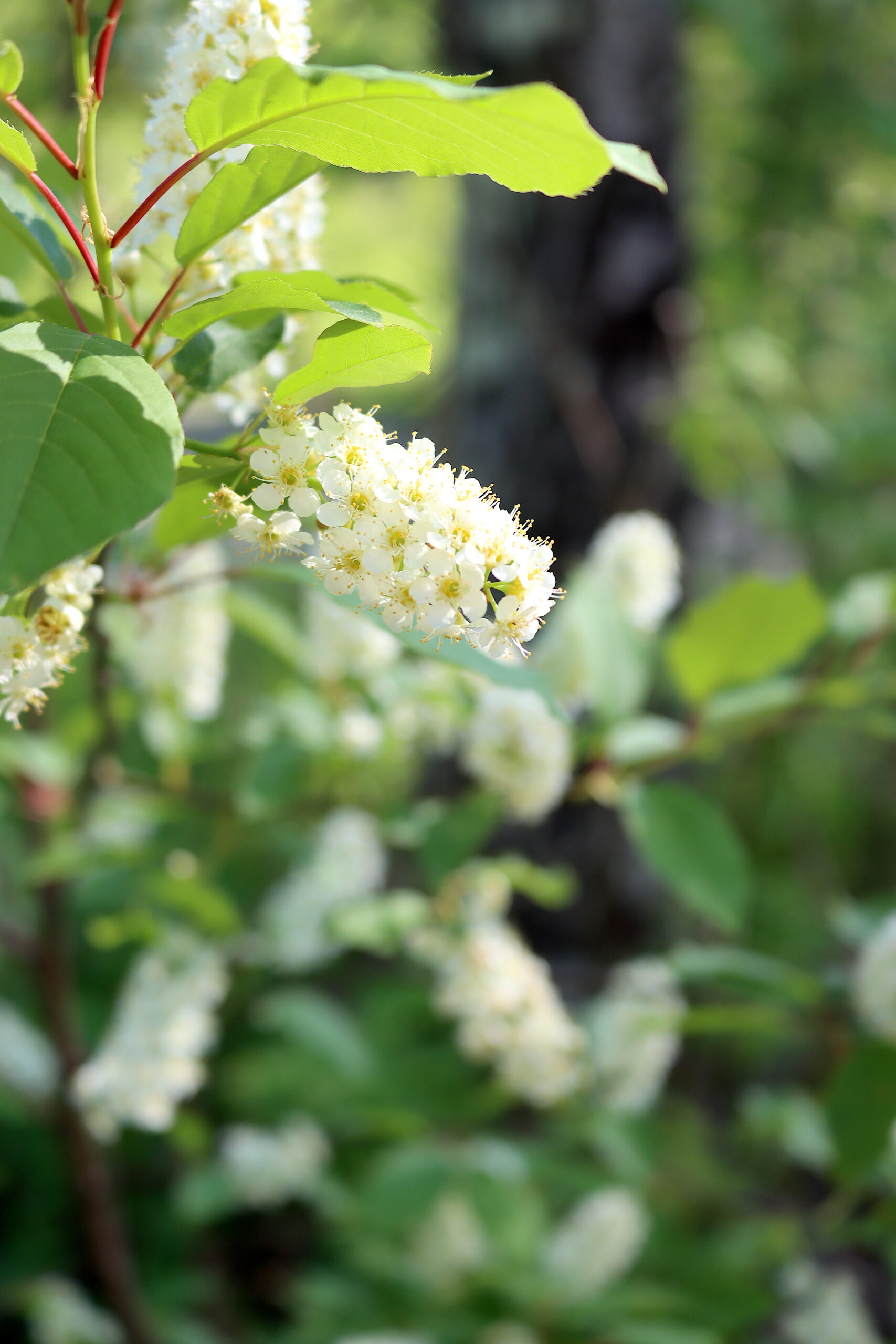
More recently, there has been a renewed focus on the traditional Native American preparations of Chokecherry. In 2017, a high school student, Destany “Sky” Pete, of the Shoshone and Paiute Tribes of the Duck Valley Indian Reservation in Idaho and Nevada, tested traditional Chokecherry pudding on uterine sarcoma cells and found that the traditionally prepared pudding had cancer-inhibiting properties.
However, in the modern context, Chokecherry is still widely understudied and undervalued. Little research has been done about Chokecherry’s potential medicinal and health benefits. A graduate student from the University of Saskatchewan, Richard C. Green, analyzed Chokecherry’s physiochemical properties and phenolic composition and found that it compared favorably with blueberry and cranberry concentrates.
Hopefully, researchers will focus more on this potentially helpful and healthy berry in the future.
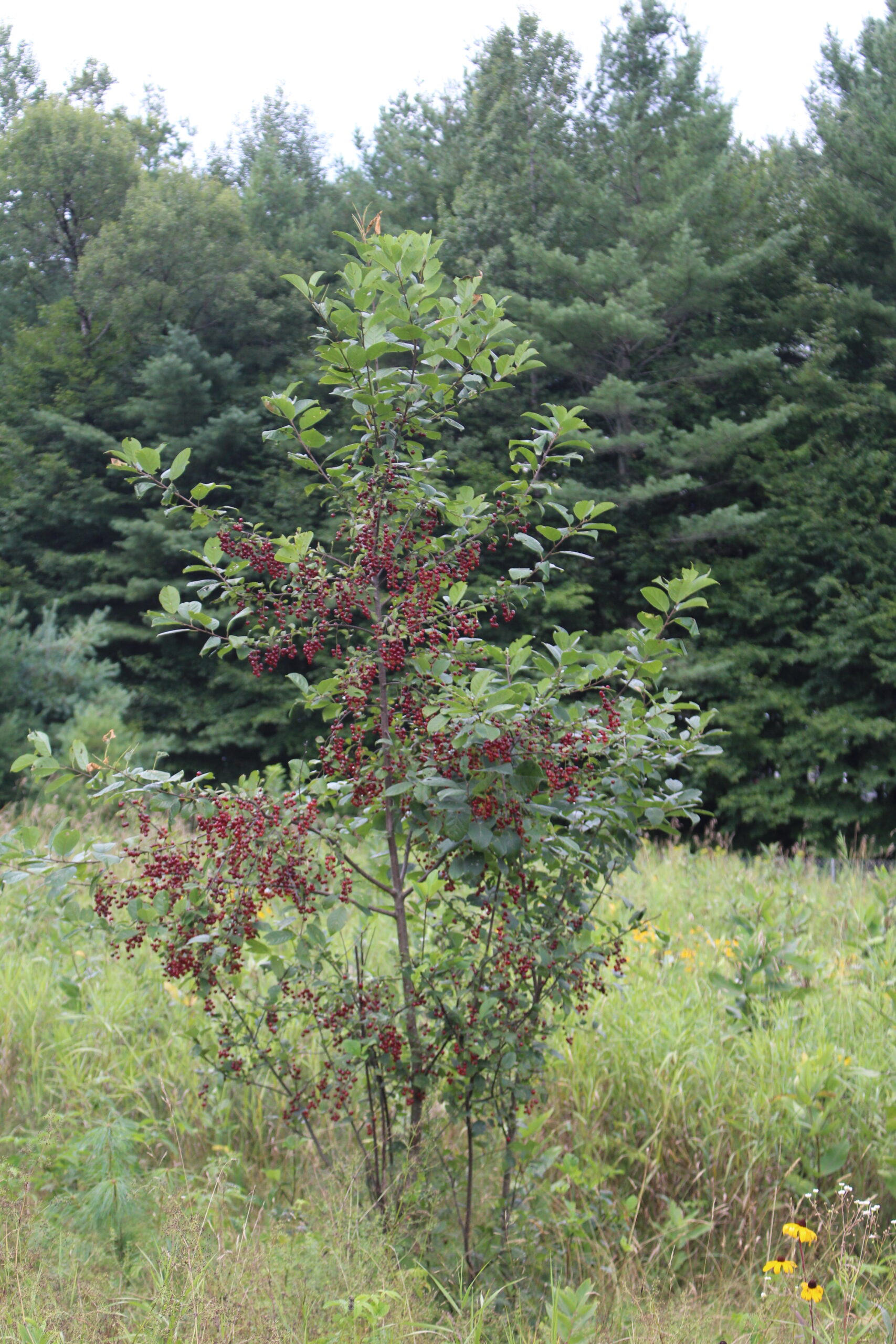
Where to Find Chokecherry
Chokecherry has an extensive native range. It grows wild throughout most of Canada and down into parts of Mexico.
In the United States, it’s more concentrated in northern states, with more scattered populations in southern states.
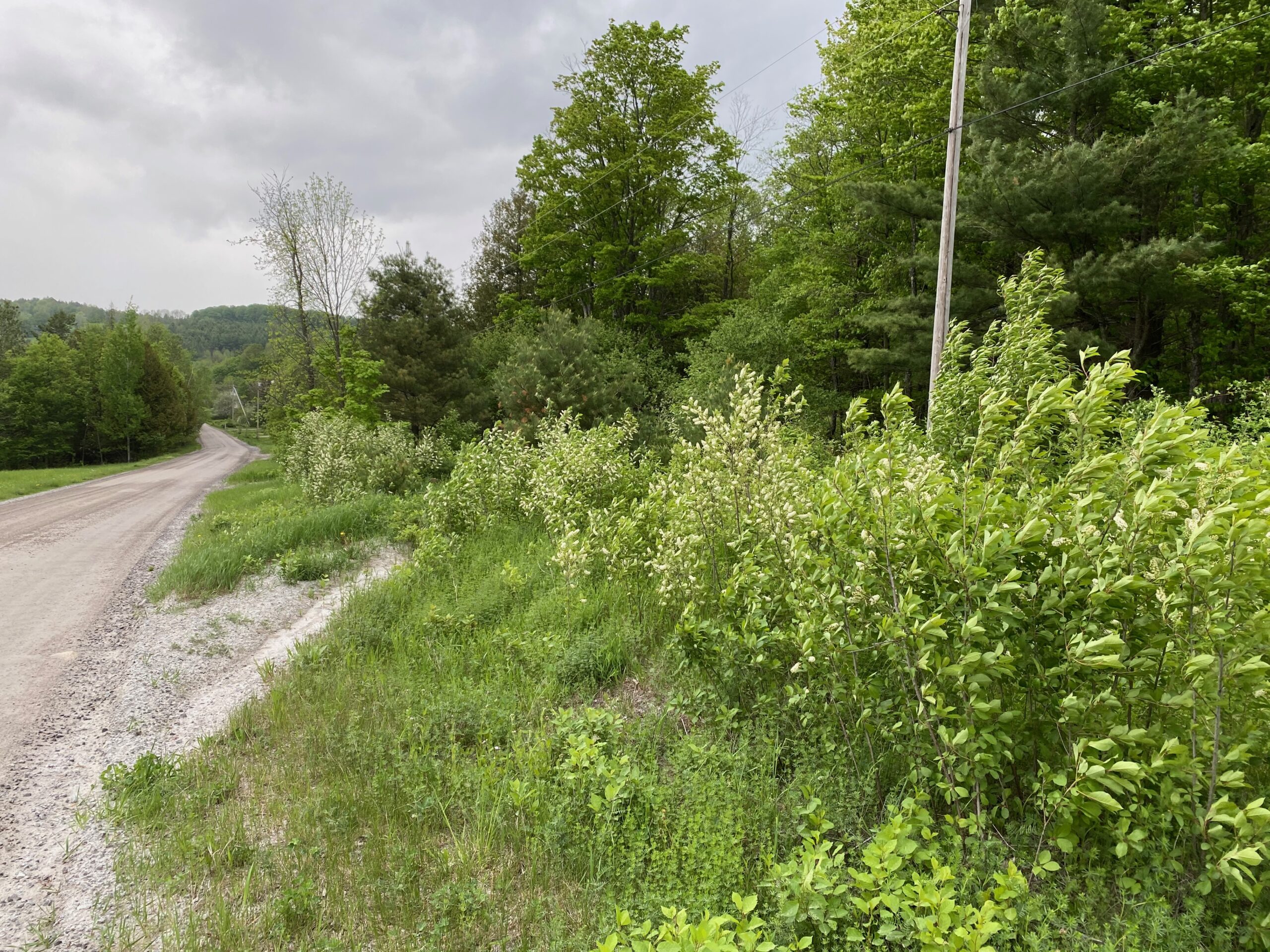
Chokecherries will grow in many soil types but prefer moist, well-drained soil. They may grow in full sun or partial shade but provide the most fruit where they receive full sun.
You may find Chokecherries growing along streams, on mountainsides, forest edges, roadsides, and clearings. They thrive in disturbed areas.
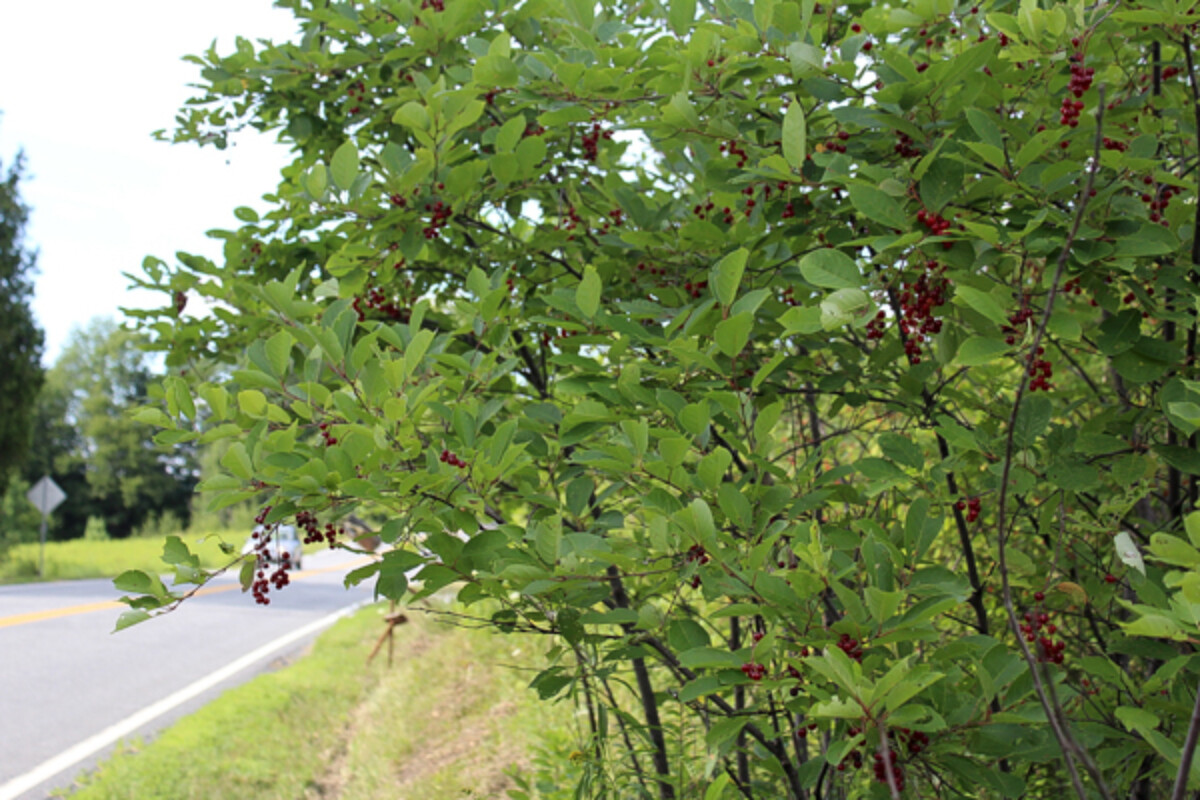
When to Find Chokecherry
If you know what you’re looking for, you can spot Chokecherry trees year-round, but they’re easiest to identify when they’re in flower or fruiting.
Depending on where you live, you may see Chokecherry blooming in April, May, or June, with the first blooms showing up in warmer, southern climates.
Elongated clusters of green berries follow the white flower clusters.
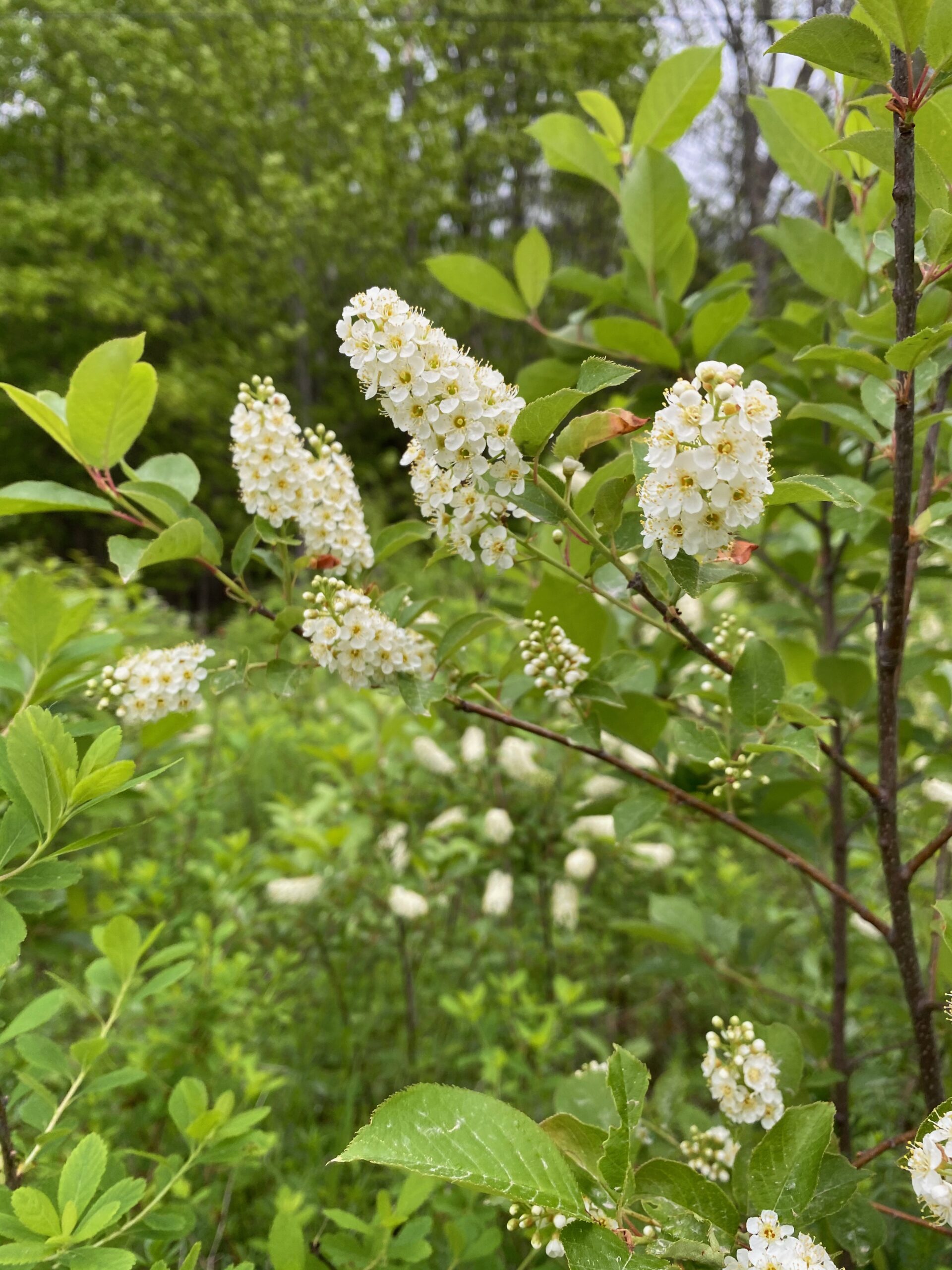
The berries ripen from green to red to dark purple. In southern areas, the berries often reach their ripe, dark purple stage between June and August. In northern regions, they typically ripen between August and September.
If you want to harvest Chokecherries, you’ll have the best results if you wait until they are fully ripe. Unripe berries are even more astringent.
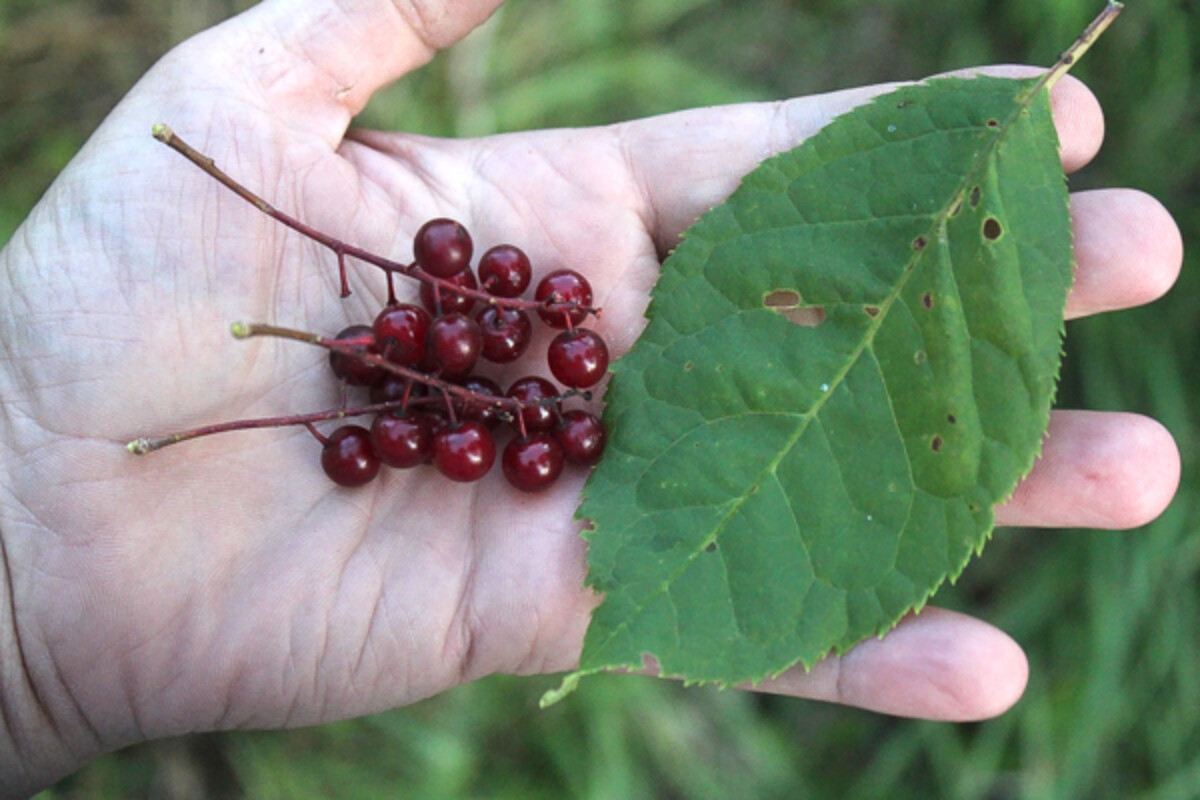
Identifying Chokecherry
Chokecherry looks like large shrubs or small trees growing in clonal clusters. They tend to have an irregular, horizontal, oval shape and may grow 20 to 30 feet tall. They may reach 10 to 15 feet wide.
You’ll notice elongated, drooping clusters of white flowers in spring or early summer. Later, these flowers give to clusters of small berries ripening from green to red to dark purple. In the autumn, their foliage changes to beautiful shades of golden yellow, orange, red, or purplish red.
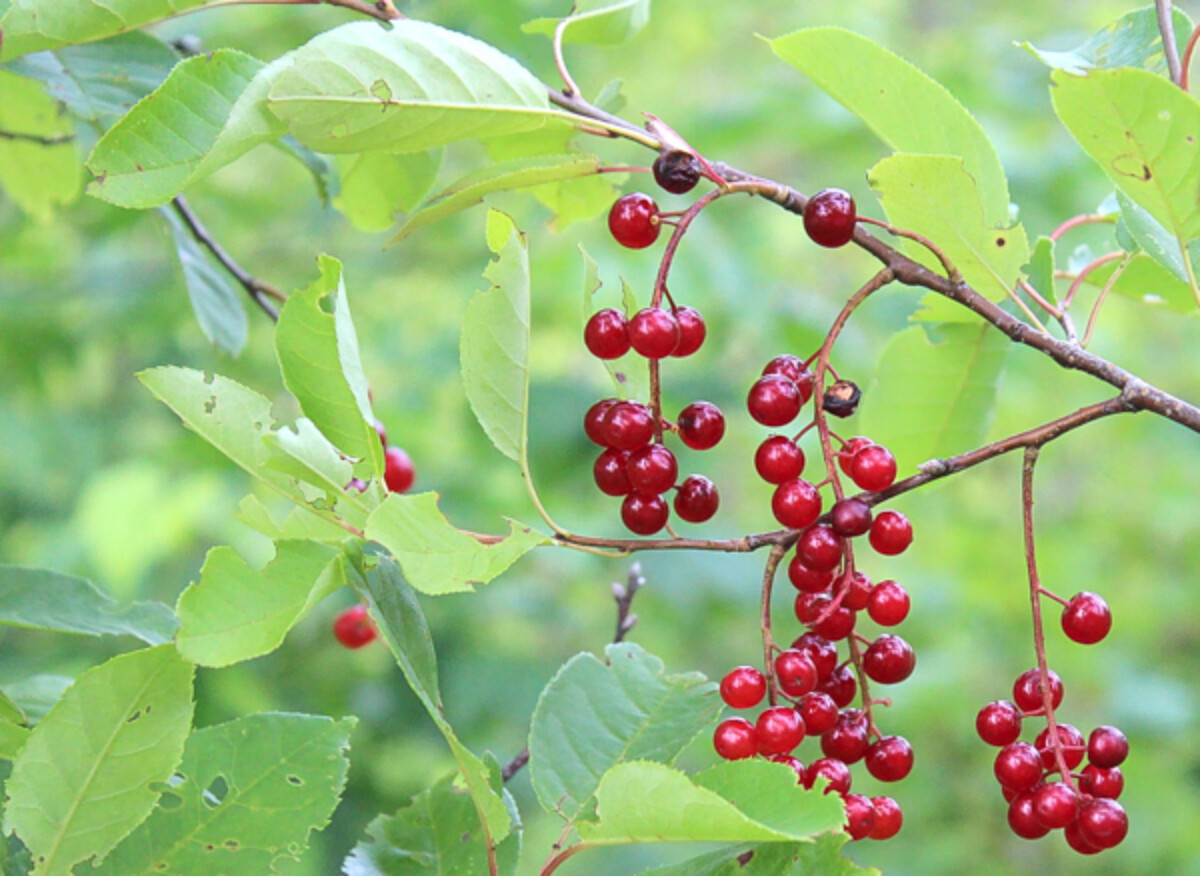
Chokecherry Leaves
Chokecherry leaves are simple, alternate, and elliptic to ovate with sharply toothed margins. Individual leaves are usually 1.5 to 2.5 inches long. They are typically dark green above and gray-green below.
In fall, the leaves change color before dropping and may be golden yellow, orange, red, or purplish red.
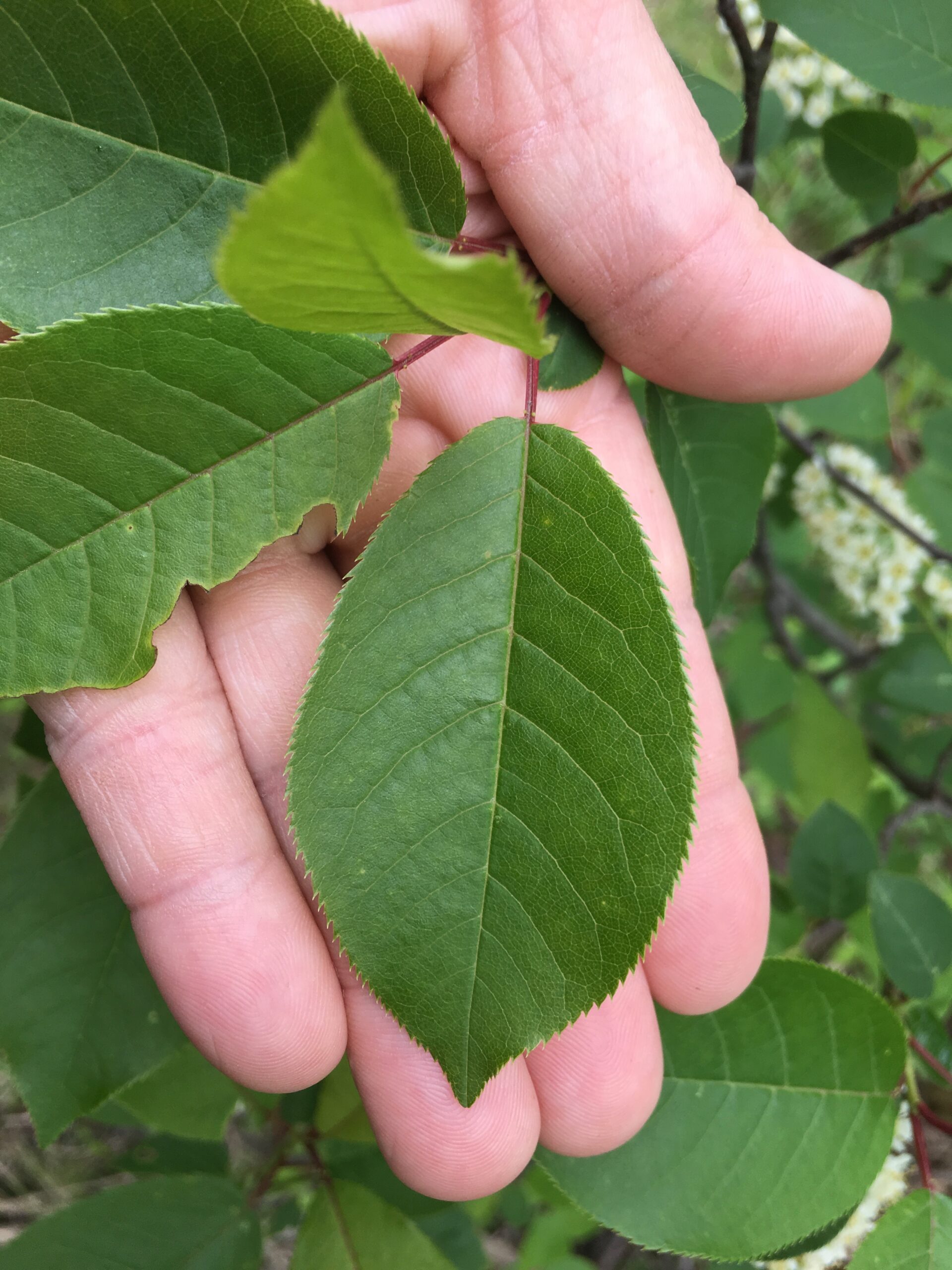
Chokecherry Bark
Chokecherry has strong trunks that may grow to 20 to 30 feet tall. The trunk and larger branches typically have gray to black bark with many prominent reddish-white lenticels or corky, raised pores.
Young slender twigs are often reddish-brown or orangish.
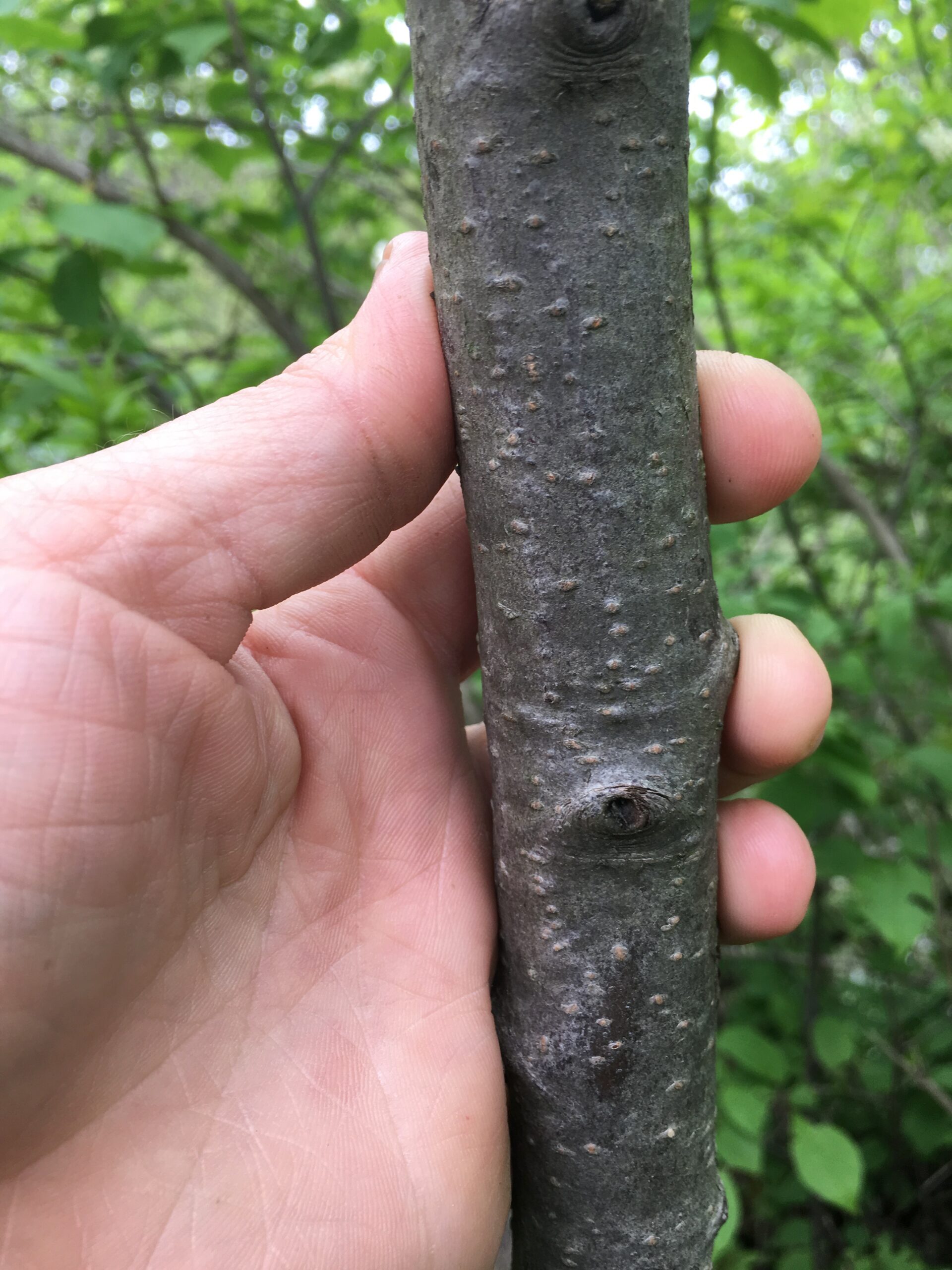
Chokecherry Flowers
Chokecherry forms elongated, drooping flower clusters 3 to 6 inches long. The clusters are comprised of 5-petaled, white cup-shaped flowers.
Individual flowers are about ½ inch in diameter.
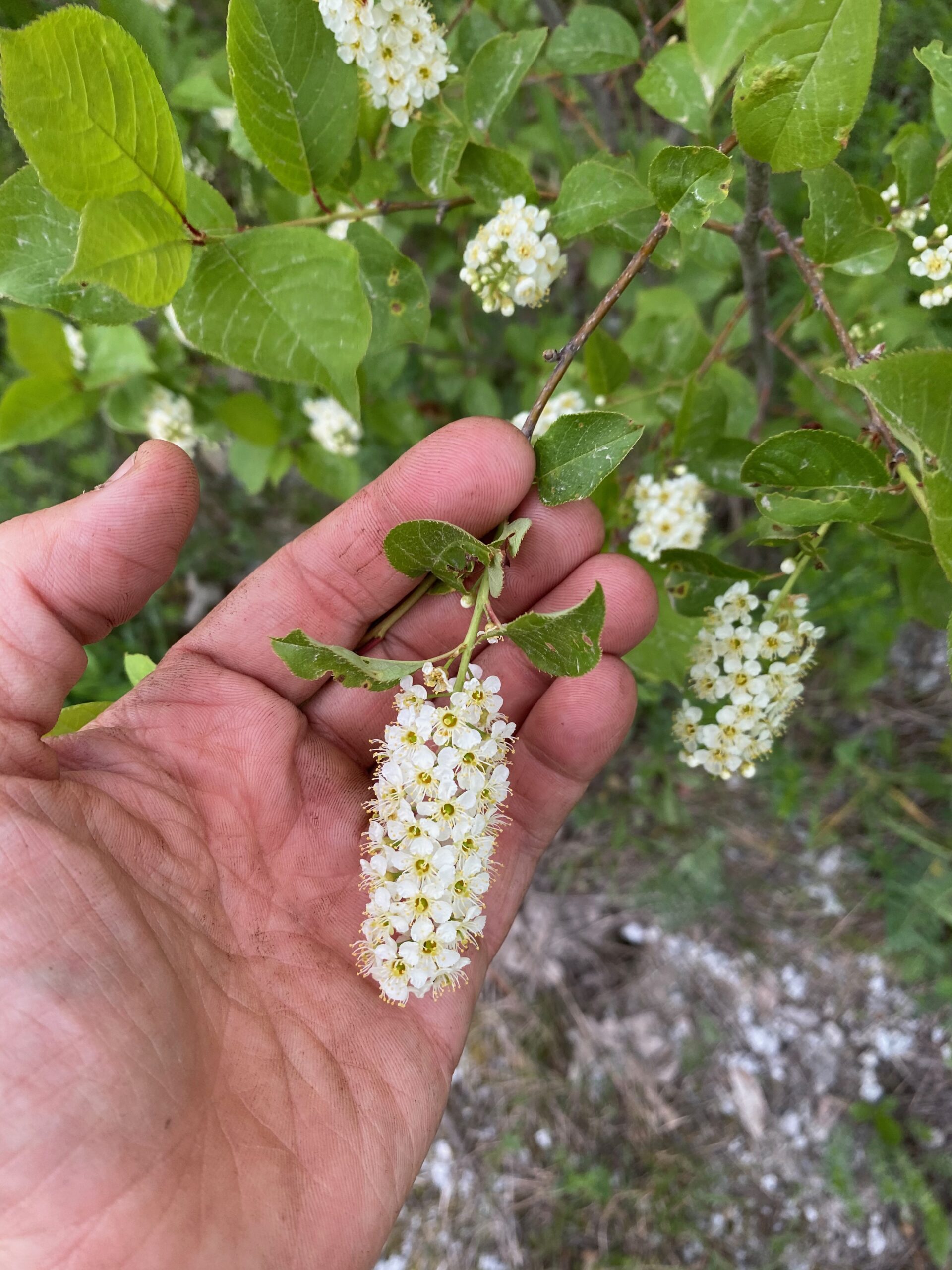
Chokecherry Fruit
Chokecherry flowers give way to green, pea-sized, round, or oblong fruit. The fruit ripens from green to red before turning purplish-black between June and August in warm southern areas or August through September in northern areas.
When ripe, the fruit is fleshy and ¼ to ½ inch in diameter. Each berry contains a single large seed.
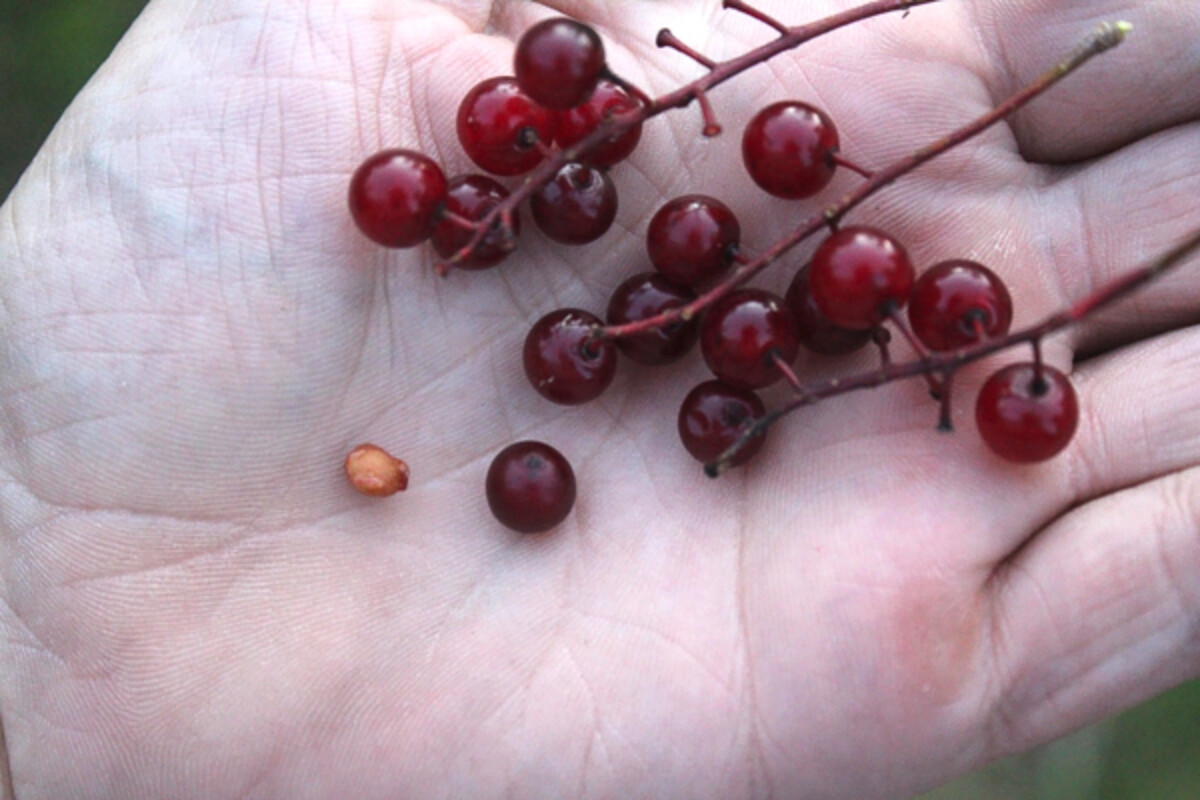
Chokecherry Look-Alikes
Chokecherry is sometimes mistaken for Common buckthorn (Rhamnus cathartica). However, Common Buckthorn differs in several noticeable ways:
- Common Buckthorn has spines on its branches.
- Common Buckthorn has smooth, oval-shaped leaves.
- Common Buckthorn has yellowish flowers.
- Common Buckthorn berries have three seeds.
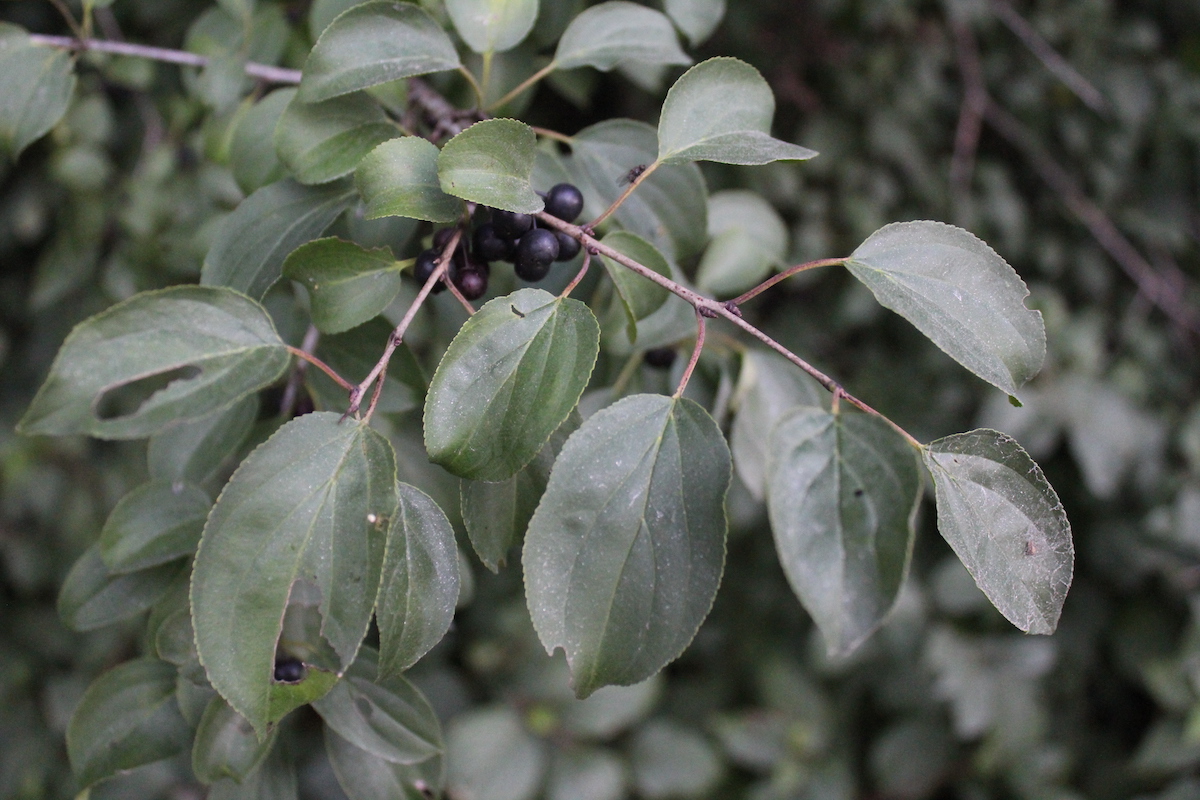
Another look-alike is another Prunus plant with edible berries, Black Cherry (Prunus serotina). Black Cherry can be distinguished from Chokecherry in the following ways:
- Black Cherry is a tree that can reach 40 to 60 feet tall with a crown 20 to 30 feet wide.
- Black Cherry bark tends to be dark, rough, and scaly on the trunk.
- Black Cherry leaves tend to be narrower and may be narrowly ovate or lanceolate-ovate.
- Black Cherry leaves have rounded teeth on their margins.
- Black Cherry berries are usually larger, ½ to 1 inch in diameter.
- Black Cherry tends to ripen 2-3 weeks after chokecherries.
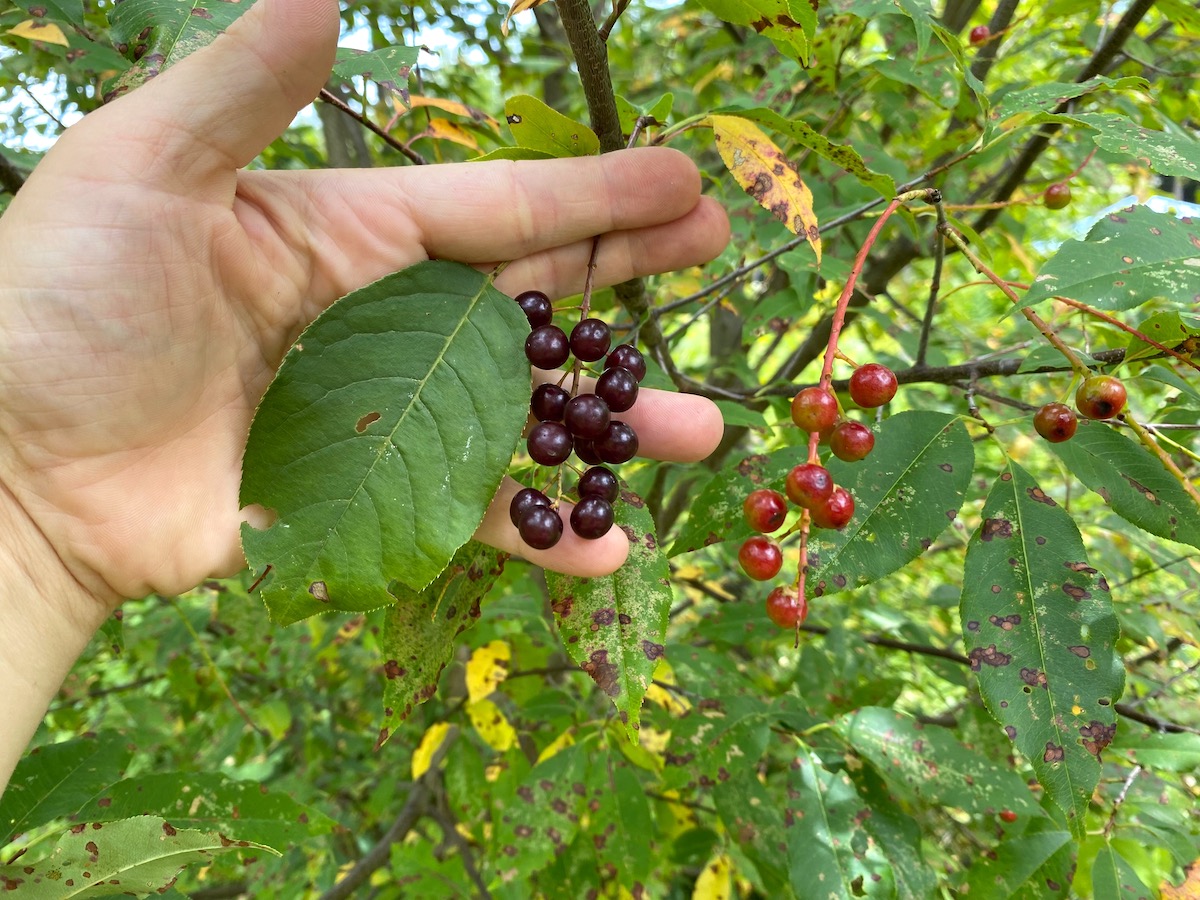
Lastly, Chokecherry fruit can be mistaken for the fruit of Japanese Honeysuckle (Lonicera japonica). Fortunately, it too differs in a few easy-to-spot ways:
- Japanese Honeysuckle is a climbing vine.
- Japanese Honeysuckle stems are reddish-brown and hairy.
- Japanese Honeysuckle has tubular yellow or white fragrant flowers.
- Japanese Honeysuckle berries contain 2 to 5 seeds.
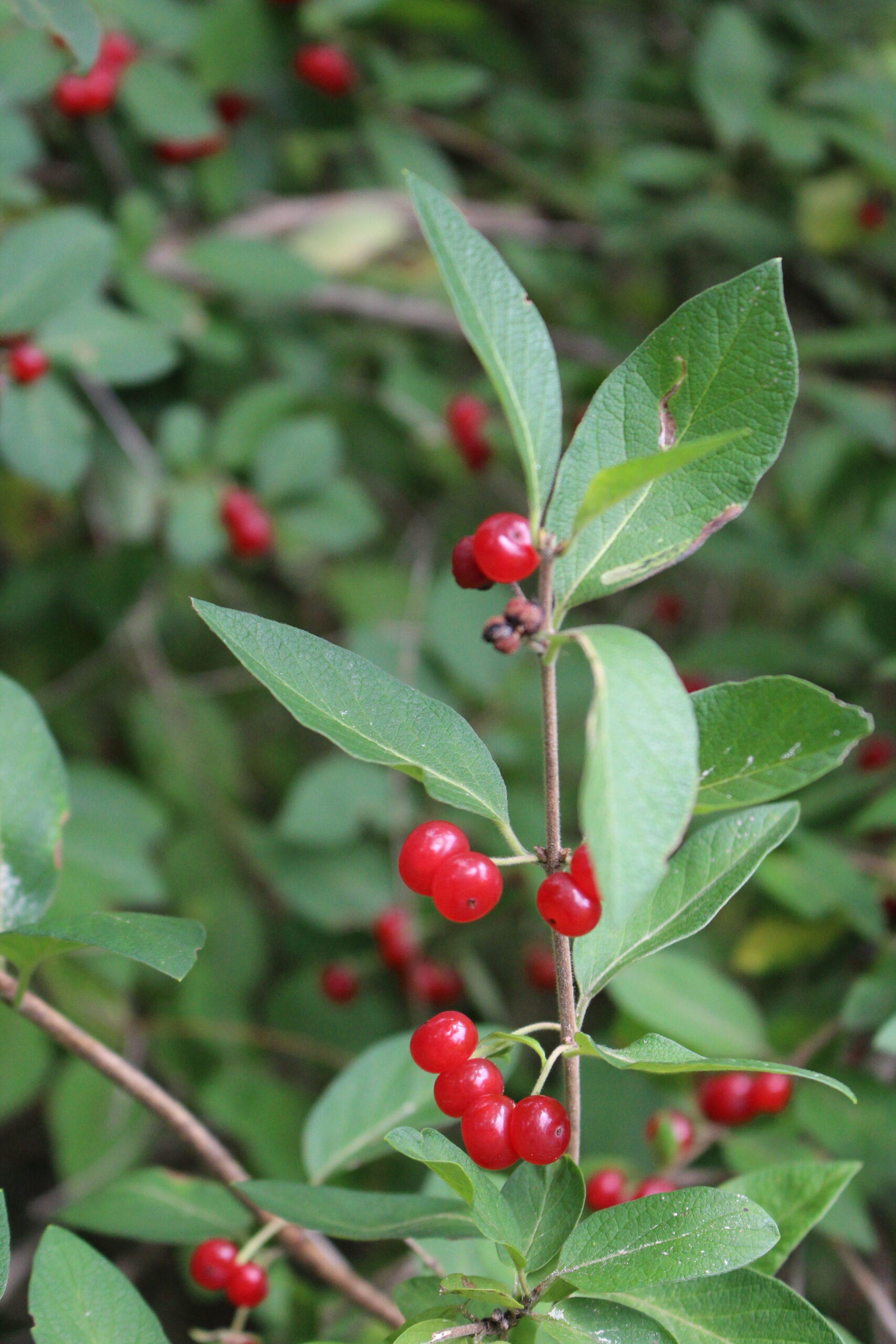
Ways to Use Chokecherry
Chokecherries are a delicious wild edible, once you know how to prepare them properly. When harvesting, you must wait until they are fully ripe. Pick your chokecherries once they have been a nice dark purple-black color for a couple of weeks.
Once you’ve got a good supply of Chokecherries, you can start processing them. Most people choose to mill out the seeds, but cooking the seeds also renders them safe for consumption.
The berries’ unique flavor lends itself to sweet and savory dishes. Some classic ways to preserve Chokecherries are jam, jelly, syrup, or wine. Chokecherry juice or syrup makes an excellent base for various sauces, including barbeque sauce and marinades for meat, fish, and vegetables.
As Chokecherries made up an important part of many Native American groups’ diets, they often preserved huge quantities, typically by pounding and drying them into patties. (Drying the pounded seeds in the sun also detoxifies them.)
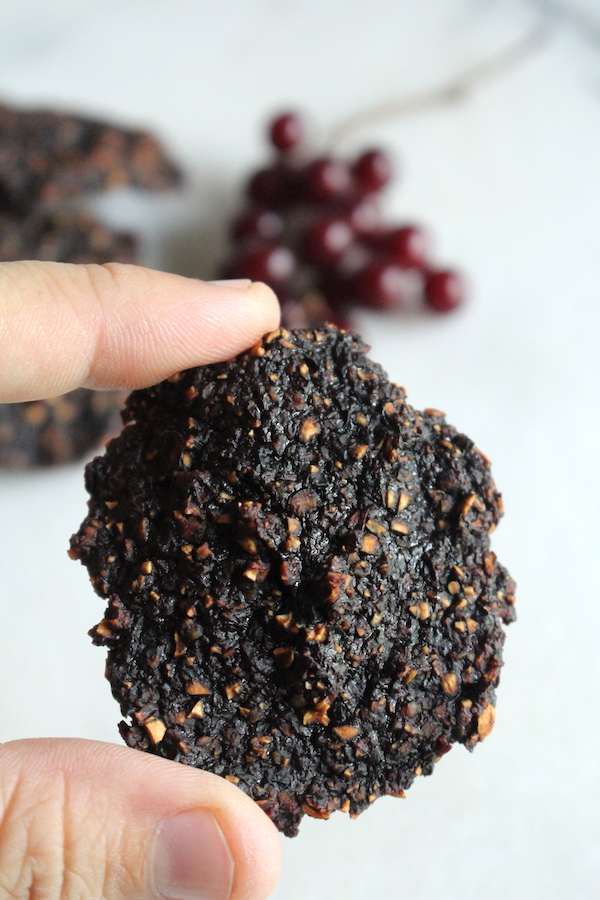
Samuel Thayer, the author of A Forager’s Harvest says that he prepares chokecherries raw and without sugar by storing them in the refrigerator, and then turning the fruit into fruit leather:
“Almost all of the chokecherries that I eat are in the form of dried fruit leather. This is convenient, delicious and healthy since it is unadulterated by the addition of sugar. The secret to making really good chokecherry leather is to pick very ripe cherries and then let them sit in the refrigerator for a day or two before straining. This aging facilitates some chemical change that significantly reduces the astringency of the fruit’s pulp.”
He extracts the pulp from the seeds without cooking by using a food strainer with the tension spring removed. I’ve tried with the tension spring left in, and it clogs the whole thing into a mess, so be sure to remove the tension spring.
Sarah from Root’s School just dries them whole, and enjoys them as a crunchy snack. There’s some evidence that the heat from a dehydrator is sufficient to neutralize the toxin in the seeds, and the pit becomes cruncy inside, a bit like a hackberry.
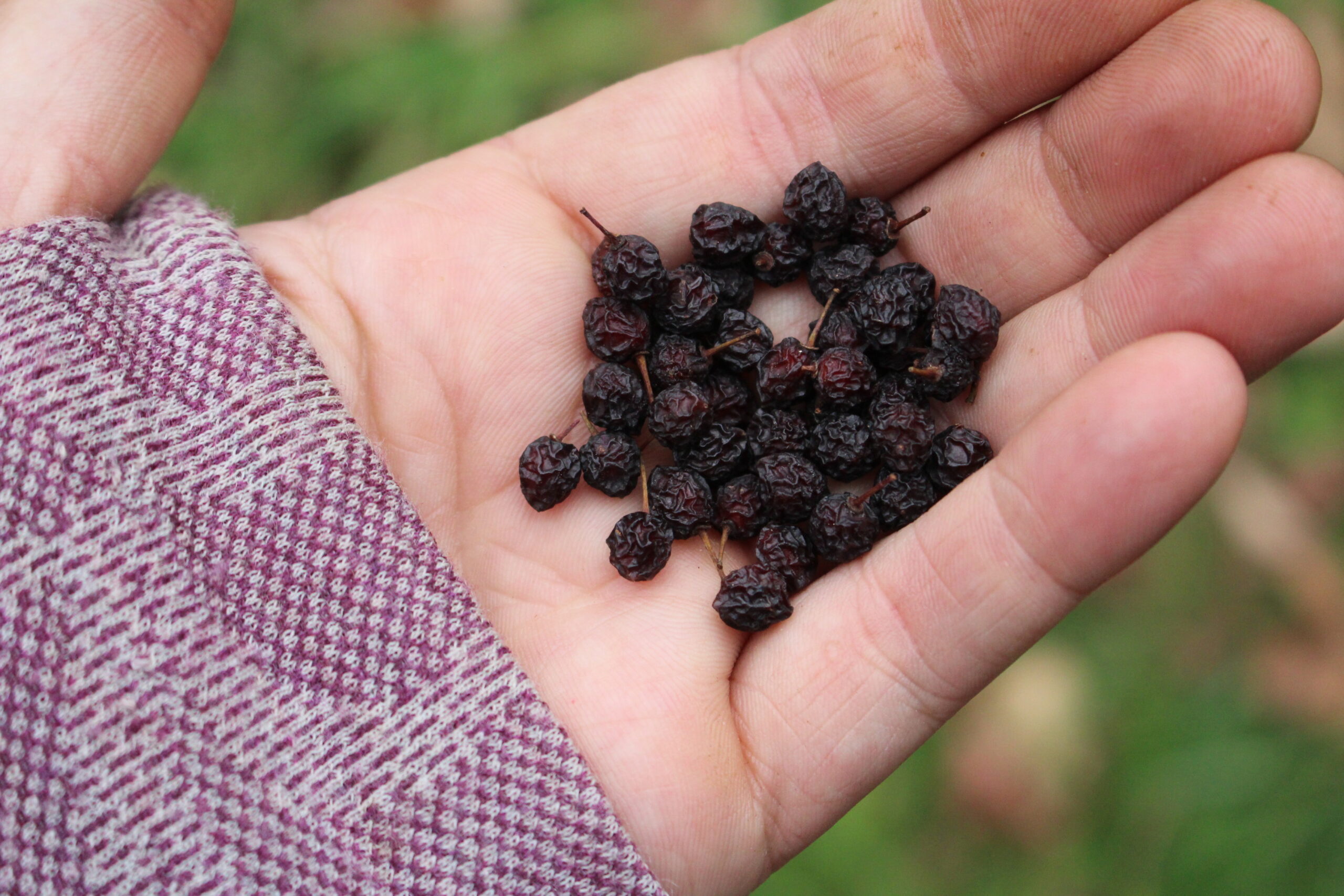
Little is known of Chokecherry’s medicinal value. While historically, Native Americans and early colonists used the bark in medicinal preparations, it isn’t recommended today.
However, you can experiment with incorporating the vitamin and antioxidant-rich fruit into teas, cough drops, cough syrups, or other medicinal applications.
Chokecherry Recipes
I have a full list of chokecherry recipes, but my favorites are wine, dried patties, jelly and just eating them dried as a snack.
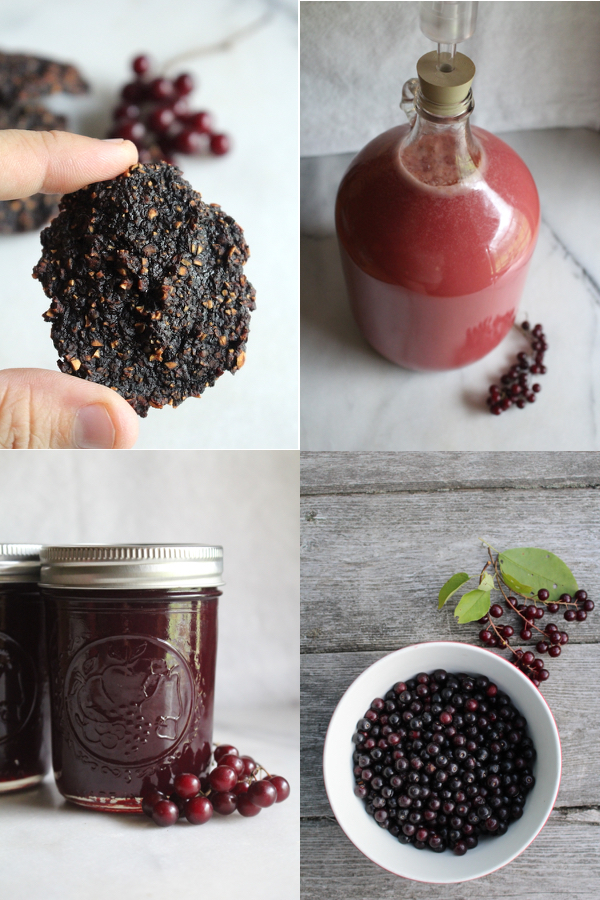
Here are a few more recipes to get you going:
- Preserve your harvest with our simple recipes for Chokecherry Jelly or Jam.
- Skip the pectin and make a simple chokecherry syrup.
- Turn your harvest into a wild foraged wine with this chokecherry wine recipe.
- Learn to make Chokecherry Pudding with the First Nations Development Institute.
- If you’re looking for something more savory, try this recipe for Grilled Trout with Chokecherry-Herb Sauce and Sauteed Oyster Mushrooms from the Mill City Farmers Market.
- For the adults, try a fun foraged twist on the classic Cherry Bounce (a Rye cocktail) from the Backyard Forager.
Fruit Foraging Guides
Looking for more wild edible fruit?
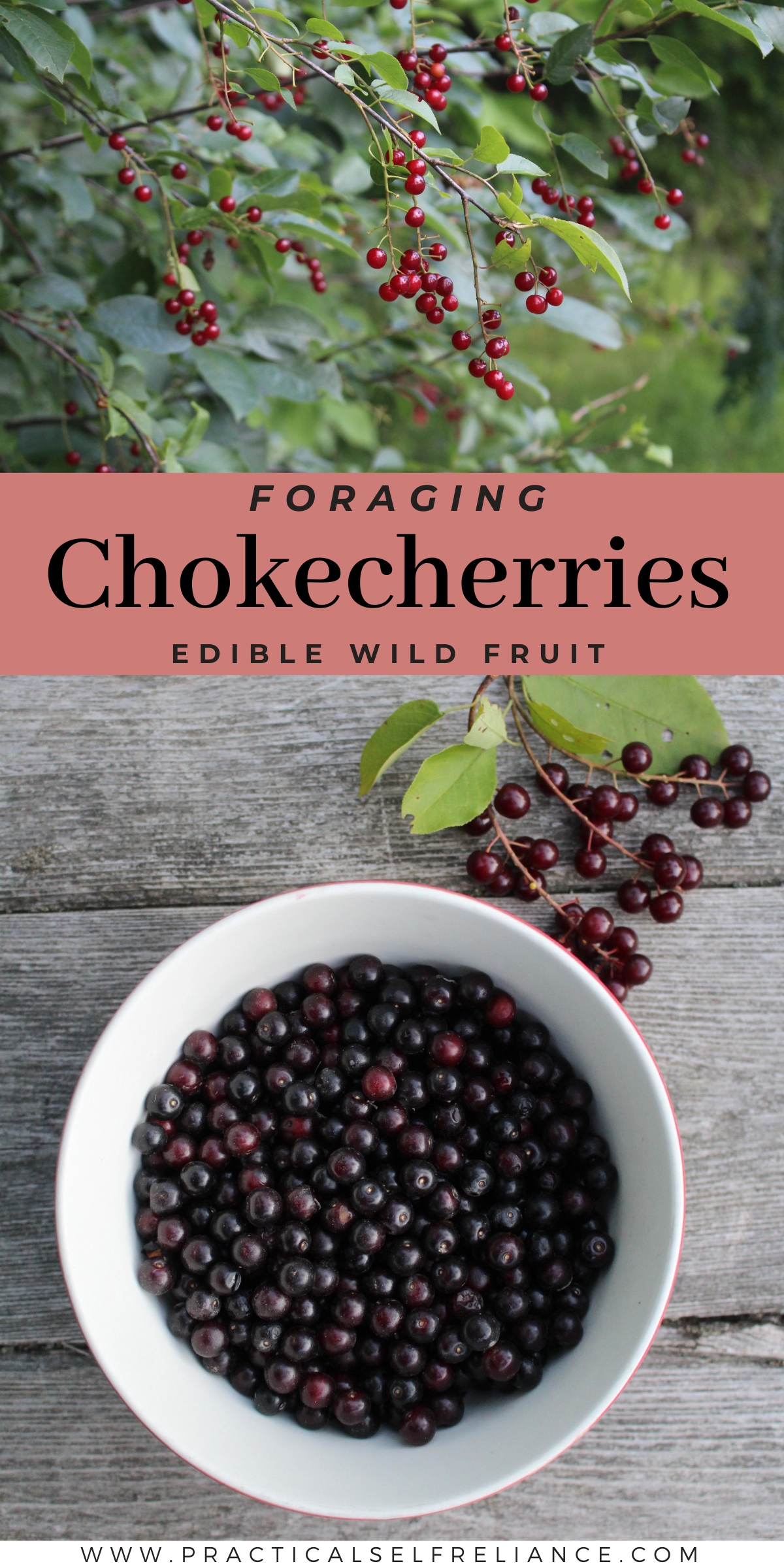


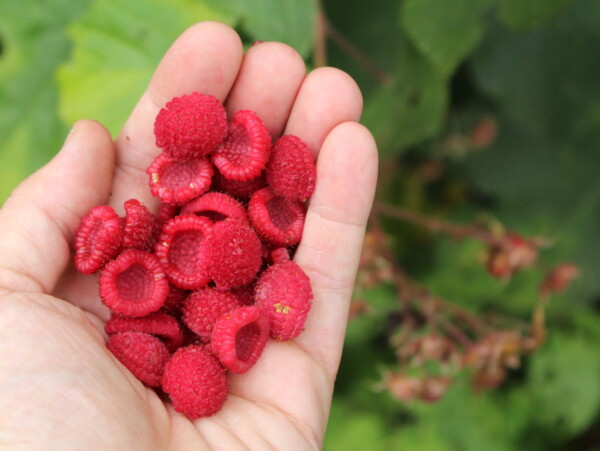
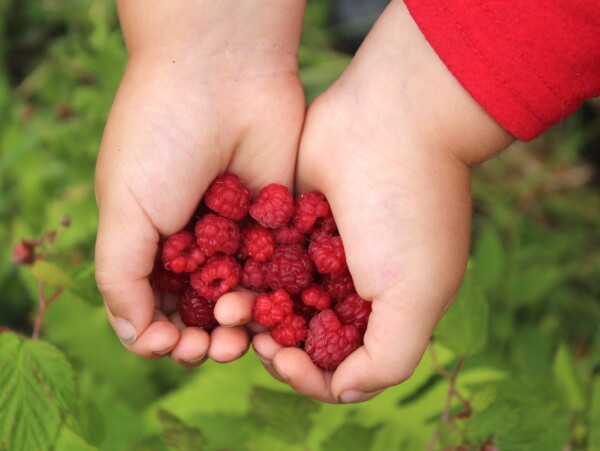










Only pick and eat them when they’re so dark that they’re almost black. That’s when they’re ripe, leaving them sweet with very little tartness
When juicing the chokecherries, can you use imperfect cherries? For example there is a hole in the cherry. Which I am assuming has been done by an insect. Is it safe to use these cherries as well?
There is a certain kind of fly that lays its larvae in the cherry fruit and they then hatch inside of it. I would personally want to verify if there are any worms inside the fruit before using them for juice. With that said, I don’t think these particular pests are harmful to humans when accidentally ingested. You will just have to use your own judgement on this one.
I noticed you refer to chokecherries as shrubs. I was in my garden today and a tree branch from the edge of the woods grew over the garden. The leaves, fruit and seed pits fit the description, and it had a pleasant smell when crushed, but this is, like, a 20 foot tree. Does this sound like a chokecherry or a look-alike to you?
According to the Lady Bird Johnson Wildflower Center a Chokecherry tree is “A large, deciduous shrub or small understory tree, choke cherry grows 20-30 ft. tall and often forms thickets.”
Here’s another way to use chokecherries….syrup. Delicious on pancakes, waffles, french toast and vanilla ice cream! MMMMMM!
Yes! So yummy!
I froze my harvest from last year as whole fruit (seeds intact). Do you think this was a mistake leaving the seeds in? Or can I thaw and proceed with any of your chokecherry recipes?
I think you’ll be fine to thaw and proceed.
Thanks! I’ll give it a try. I’m leaning towards a gallon of wine
You’re very welcome.
I love reading your information. But I wish you could make a printable page with just the main pertinent information. Then I could put it in my herbal folder. Never know when the internet will not be here… Just a thought.
Thanks for that suggestion. If I find an article that I want to keep that isn’t printable then I will often copy and paste the information that I want into a word document and then either save it or print it.
Because of the Chokecherries medicinal properties, is it possible to create a tincture (?) using vodka? If so, have you ever done this or how should it be done? I read on a different site where chokecherries have medicinal uses.
Yes, you can create a tincture, but I’m not sure if you should use the pits in the tincture as I don’t think the alcohol would denature their toxic compounds. If you do, I’d do it by juicing the fruit and then preserving with alcohol. That said, I’m not really sure if the fruit juice is medicinal in that way?
I’d look into what parts of the plant are medicinal. I’ve read things that say the berries are beneficial, but only if eaten in the traditional way (ie. the pounded and then sun-dried chokecherry patties), since the pits are the source of the medicine at least according to that source (can’t find it now).
Other sources use the bark for cough medicine, in place of black cherry bark. In that case, you wouldn’t be tincturing the fruit, but instead the bark.
Anyhow, think about what you’re trying to get out of it and make sure a tincture is the right preparation for the benefits you seek. I don’t know all that much about the benefits of chokecherry medically, so I can’t really advise you here.
Hello,
I’ve not read of anyone making chokecherry syrup. I grew up in MT and my grandmother and mother made a fabulous syrup that was most often served with buckwheat Pancakes. I remember the process was similar to what’s been described for Jelly making, i.e., cooking the berries and straining out the seeds, but I don’t know what happened next. The syrup was not overly sweet, and had a bit of a sour kick to it, as I recall, but so flavorful and delicious with pancakes of any kind, especially those made with buckwheat flour.
We just happen to have a whole post about chokecherry syrup right here. https://practicalselfreliance.com/chokecherry-syrup/
I actually came to your site hoping to find out if the blossoms are edible. I wanted to put some of the flowers in my salad, like I do with dandelion heads (and leaves) as well as my rose petals, when they are in season.
I don’t believe so. From what I have found in my research, all parts of the tree with the exception of the cherry flesh contain hydrocyanic acid which is poisonous.
If you have your eye on a brush that you’re hoping will ripen a bit more, buy a couple of those netting from the dollar store and cover the bush, tying it together at the stem. I do this with my Saskatoons in the yard, as well as the sunflowers (birds and squirrels).
My chokecherries are 2 big trees and one bush. Only the birds and I eat them, so there is plenty to go around, and no trouble waiting until they are fully ripe : )
Yes, netting can definitely be a great option.
thank you for the best information I have found about astringency in choke cherries. that is what got me to your site
You’re welcome. I’m so glad you’re here, Betty!
Thanks for the mention of steam juicers! They are wonderful for fruits with lots of seeds or strongly sour skins. I steam juiced small wild type plums. For 6 quarts of very flavorful juice I only added 2 cups of sugar and some salt, which helps mellow the sour. The juice is still too sour to to drink straight but can be mixed in drinks our used in jello salads with milder fruit. I like it over ice cream. Steam juicing, I think, cuts the sour in half without losing flavor.
Thanks for the tips. Steam juicing is the way to go, for sure!
Can I freeze juice (minus sugar) and make wine at a later date?
Sure can!
I tried to make something out of my chokecherry harvest for the first time; I’m wondering if I didn’t use enough sugar. The syrup/loose jelly mixture I got from it still has a slight astringent/pucker aftertaste. My question is this normal for chokecherries? Can I get rid of that pucker by adding more sugar next time? Or will all chokecherry products still have that hint of astringent taste no matter how much sugar you add? Great read btw!
I’d guess you harvested them a bit early? Were they all the way black (or really close to it)?
I made chokecherry jam and jelly this year, no pectin added just a bit of lemon juice and using a citrus seed pectin technique. The jelly wasn’t bitter at all, and I used 2 cups sugar to 3 cups juice, along with the juice of a lemon. The jam, with the skins pulverized into it and just the seeds filtered out was quite bitter.
One thing I’d suggest is to make sure you don’t press the chokecherries in the jelly bag, since more of the bitter is in the skins. I used a steam juicer, so no issue there.
If the birds are picking the chokecherries off the tree, is that a sign that the fruit is ripe enough to make jelly?
As soon as the animals start picking them, they won’t last long. I just went to harvest the bushes I’d been watching all year, checked them earlier in the week and decided they needed a few more days…my mistake. Everyone was pulled when I went back this weekend. It’s hard to find a bush where the animals don’t harvest them all before they’re fully ripe. Around here, I’ve found a few lone bushes along the roadside that got fully black this year…but most years I harvest them a bit underripe and then allow them to ripen about a week on the counter.